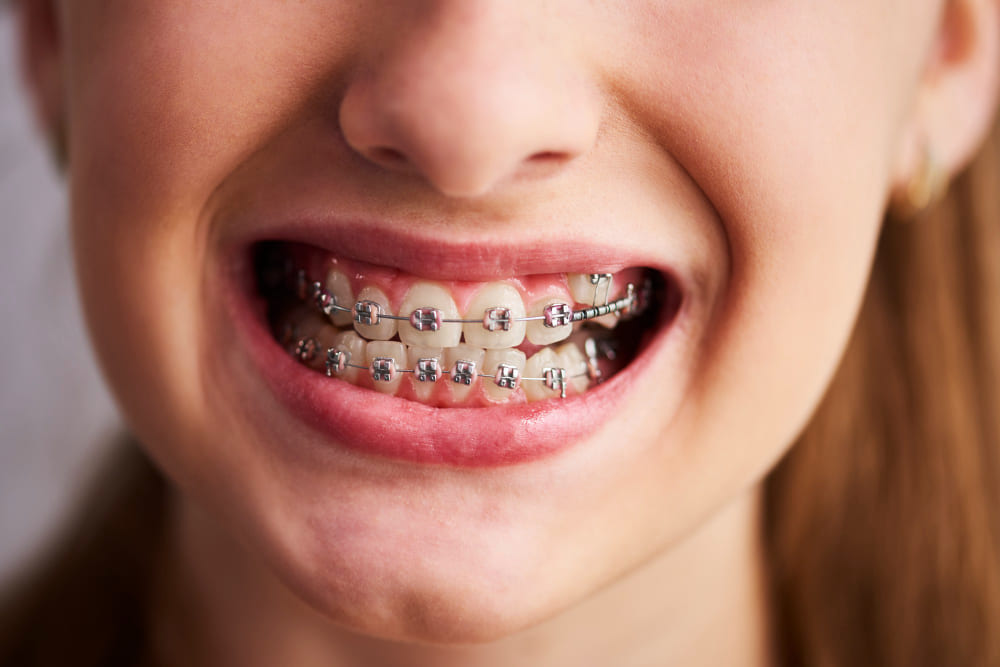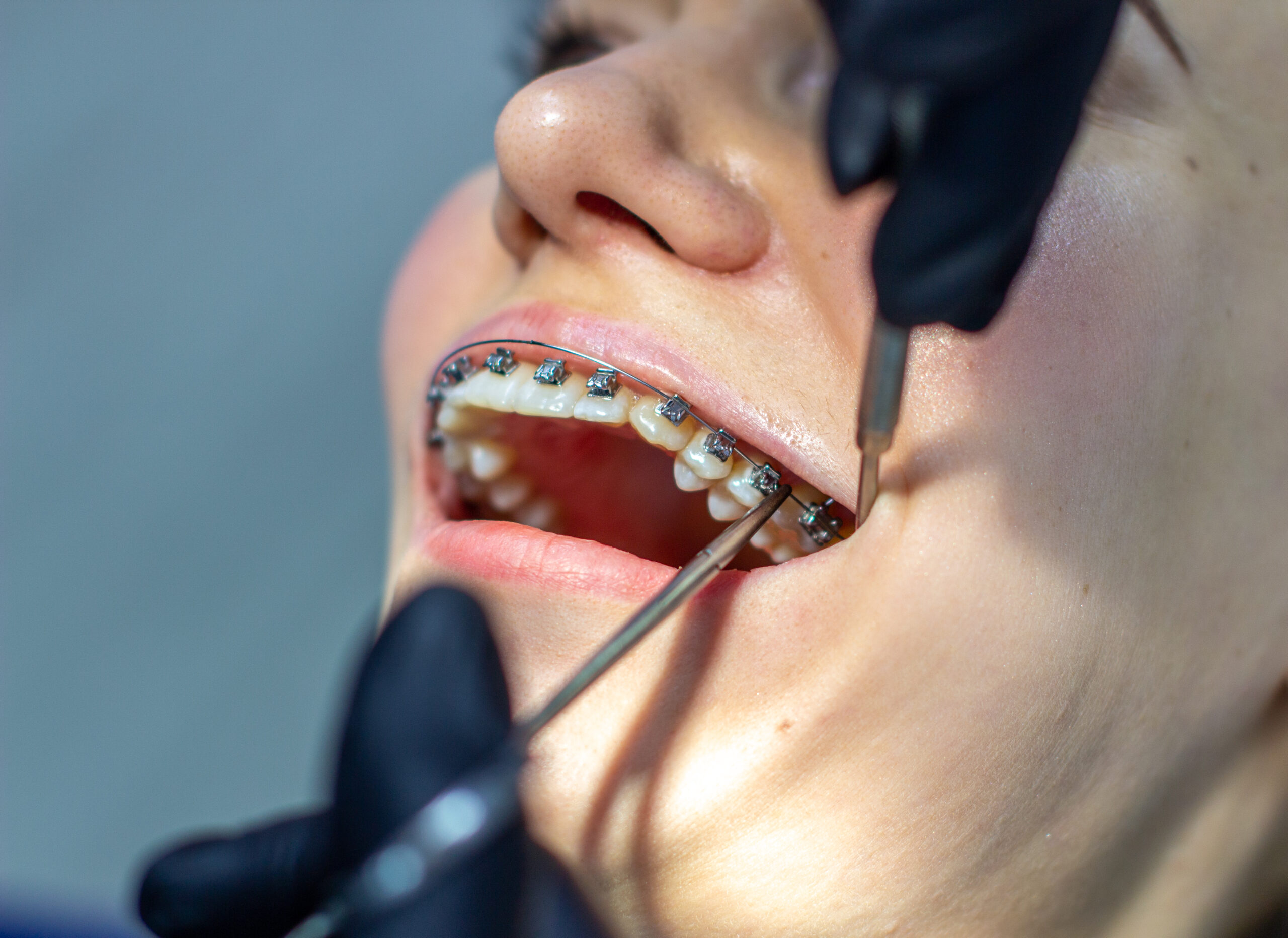Call: (810) 674-3060
What Is Orthodontic Treatment Used For?

Orthodontic treatment is essential for good dental health and a confident smile. It treats typical concerns, including overcrowding, uneven bites, and tooth gaps. This article investigates various forms, advantages, and expert guidance to assist consumers in making educated selections for a healthy smile.
Common Orthodontic Issues:
1. Overcrowding:
Overcrowding happens when there is not enough room in the mouth for all teeth to align correctly. This can result in teeth overlapping or turning, giving the appearance of being crowded. It can also make cleaning between the teeth more difficult, increasing the risk of tooth decay and gum disease.
2. Misaligned bite:
When biting down, a misaligned bite, or malocclusion, refers to an incorrect alignment of the upper and lower teeth. This can show as an overbite (upper teeth projecting over lower teeth), an underbite (lower teeth protruding over upper teeth), or a crossbite (upper teeth biting inside lower teeth). Misaligned bites can cause problems chewing and speaking, jaw discomfort, and TMJ issues.
3. Gaps between teeth:
Gaps, also called diastema, are gaps that form between teeth. Missing teeth, undersized teeth, or an inappropriate jaw alignment can cause these gaps. While some people appreciate the unusual look of these gaps, they can also present functional issues, impair speech, and increase the danger of food becoming lodged between teeth.
Identifying and comprehending these common orthodontic difficulties is critical in selecting the best orthodontic treatment strategy for patients seeking orthodontic therapy. Orthodontic treatments can improve dental health and aesthetics and restore appropriate bite functioning by treating these difficulties.
Purpose Of Orthodontic Treatment:
1. Correcting misaligned teeth:
One of the main goals of orthodontic therapy is to realign mismatched teeth. This includes repositioning the teeth to produce a straighter and more aligned grin. Straight teeth not only look great, but they also contribute to excellent dental health.
2. Improving bite functionality:
Orthodontic therapy also tries to enhance site functionality. While the upper and lower teeth are properly aligned, the jaws contact appropriately while biting and chewing. This can alleviate problems like difficulty biting or chewing particular meals and lessen tension on the jaw joints.
3. Enhancing oral health:
Orthodontic therapy is critical in improving overall dental health. Correcting misalignments and resolving orthodontic difficulties might make cleaning the teeth and gums simpler. This lowers the likelihood of plaque development, tooth damage, gum disease, and other dental issues.
Individuals may grasp the larger aims of orthodontic therapy beyond mere aesthetics by concentrating on the purpose of orthodontic treatment. Orthodontic therapy not only improves bite functionality and adds to long-term dental health, but it also enhances the smile’s appearance. Orthodontic treatment can also alleviate TMJ (temporomandibular joint) pain. Seeking expert counsel and assistance is critical in determining the best treatment strategy for each individual’s requirements and goals.
Types Of Orthodontic Treatment:
1. Traditional braces:
Metal brackets and wires are used in orthodontic treatment, which is the most prevalent. Despite their visibility, they are quite effective in addressing various orthodontic disorders.
2. Clear aligners:
This alternative to regular braces is more discrete. Custom-made, clear aligners progressively shift the teeth into the correct position. Clear aligners are removable, making dental hygiene more straightforward to maintain.
3. Retainers:
Retainers are used after orthodontic treatment to keep teeth in their proper place. They might be detachable or fixed, and their use is critical to avoid relapse.
4. Other orthodontic appliances:
Additional appliances may be utilized to meet particular orthodontic requirements. Individual needs may need headgear, palate expanders, or temporary anchoring devices.
Benefits Of Orthodontic Treatment:
1. Enhanced aesthetics:
Orthodontic therapy straightens teeth and enhances the smile’s attractiveness. A more symmetrical and straighter grin can increase self-esteem and confidence.
2. Improved oral hygiene:
Misaligned teeth can make brushing and flossing difficult, resulting in gum disease and tooth decay. Orthodontic therapy straightens teeth, allowing for improved oral hygiene and lowering the chance of such disorders.
3. Prevention of dental problems:
Early orthodontic treatment can help avoid future dental concerns such as tooth damage, excessive wear, and jaw abnormalities. TMJ (temporomandibular joint) discomfort can also be relieved with orthodontic therapy.
Orthodontic treatment is essential for good dental health and a confident smile. It improves biting functioning and general dental health by addressing misplaced teeth, overcrowding, and gaps. It also helps with oral hygiene, avoids dental diseases, and improves general health. For personalized treatment plans, see an orthodontist.
You can also read our other article: Common Orthodontic Issues And How To Fix Them?




